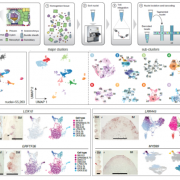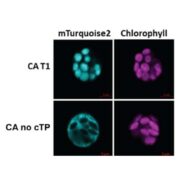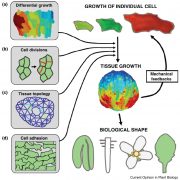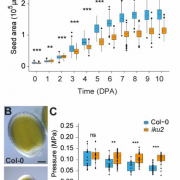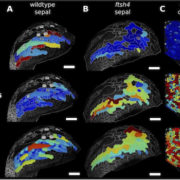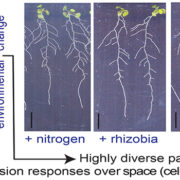RHO GTPase of plants regulates polarized cell growth and cell division orientation during morphogenesis
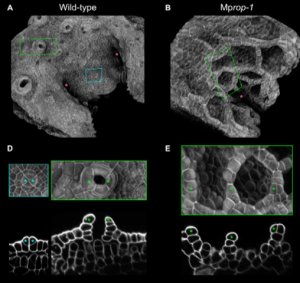 Precise spatial control of cell division and cell growth is necessary to produce the specific cellular organizations demanded by the complex tissues and organs of morphologically complex organisms One of many factors that guide cell division/growth is cell polarity, of which RHO GTPase-type proteins have emerged as conserved eukaryotic regulators. RHO of Plants (ROP) form a plant-specific clade of RHO GTPases required for cell polarization in different species and developmental contexts. ROP proteins achieve polarization by localizing to specific cellular domains, however, although ROP function has been investigated in different cellular contexts no clear phenotypes have been observed at the level of plant tissues/organs even in higher order rop mutants, leading to the question: do ROP proteins contribute to the formation of complex tissues and/or organs? Seeking an answer to this question Mulvey and Dolan took advantage of the liverwort (Marchantia polymorpha) low genetic redundancy, which encodes a single ROP gene (MpROP). Mprop mutants display an array of tissular and morphological phenotypes resulting in defective air chambers, gemma cups and gemmae, consistent with the authors’ hypothesis that MpROP participates in organogenesis and tissue development. Detailed morphometric analyses of Mprop and fine imaging of translational reporter and overexpression lines showed that MpROP localizes at sites of polarized growth and gradually accumulates at the expanding cell plate as the cell prepares to divide. Consistent with the observed subcellular localization, Mprop mutants display misoriented cell divisions and loss of polarized growth, whereas MpROP overexpression also produces misoriented cell divisions. Combining reverse genetics with elegant imaging the authors were able to shed light on a likely conserved role of ROP protein in polarized growth and division orientation regulation to guide proper development of complex tissues and organs in land plants, a function that has been likely obscured by genetic redundancy in other models. Summary by Jesús León @jesussaur) Curr. Biol. 10.1016/j.cub.2023.06.015
Precise spatial control of cell division and cell growth is necessary to produce the specific cellular organizations demanded by the complex tissues and organs of morphologically complex organisms One of many factors that guide cell division/growth is cell polarity, of which RHO GTPase-type proteins have emerged as conserved eukaryotic regulators. RHO of Plants (ROP) form a plant-specific clade of RHO GTPases required for cell polarization in different species and developmental contexts. ROP proteins achieve polarization by localizing to specific cellular domains, however, although ROP function has been investigated in different cellular contexts no clear phenotypes have been observed at the level of plant tissues/organs even in higher order rop mutants, leading to the question: do ROP proteins contribute to the formation of complex tissues and/or organs? Seeking an answer to this question Mulvey and Dolan took advantage of the liverwort (Marchantia polymorpha) low genetic redundancy, which encodes a single ROP gene (MpROP). Mprop mutants display an array of tissular and morphological phenotypes resulting in defective air chambers, gemma cups and gemmae, consistent with the authors’ hypothesis that MpROP participates in organogenesis and tissue development. Detailed morphometric analyses of Mprop and fine imaging of translational reporter and overexpression lines showed that MpROP localizes at sites of polarized growth and gradually accumulates at the expanding cell plate as the cell prepares to divide. Consistent with the observed subcellular localization, Mprop mutants display misoriented cell divisions and loss of polarized growth, whereas MpROP overexpression also produces misoriented cell divisions. Combining reverse genetics with elegant imaging the authors were able to shed light on a likely conserved role of ROP protein in polarized growth and division orientation regulation to guide proper development of complex tissues and organs in land plants, a function that has been likely obscured by genetic redundancy in other models. Summary by Jesús León @jesussaur) Curr. Biol. 10.1016/j.cub.2023.06.015


